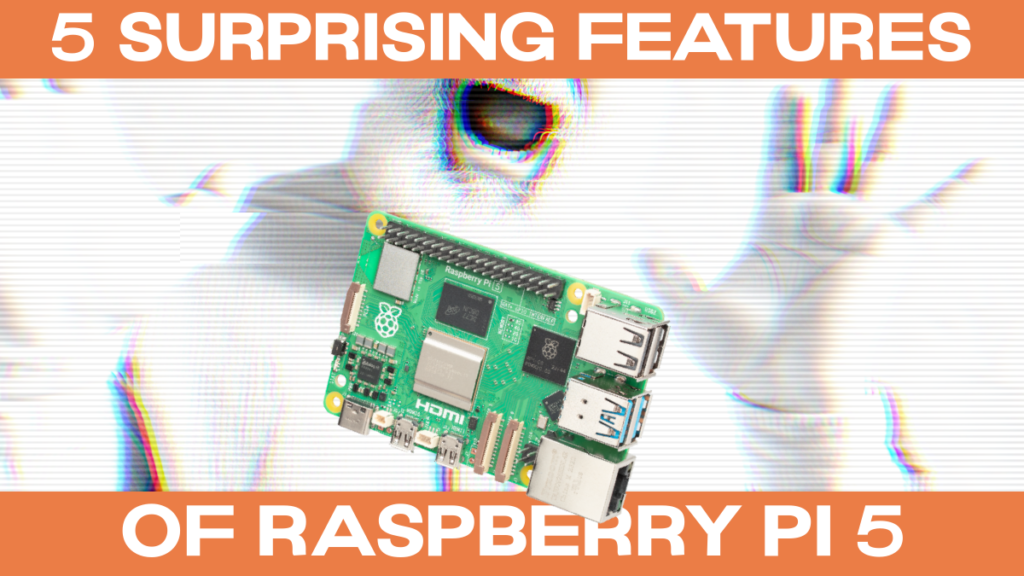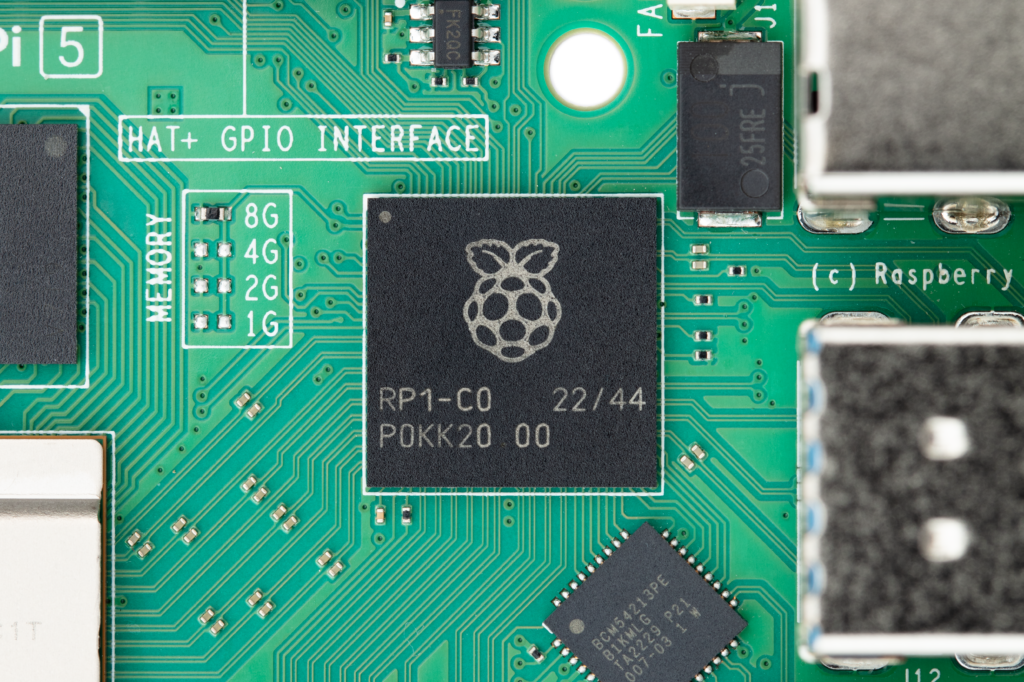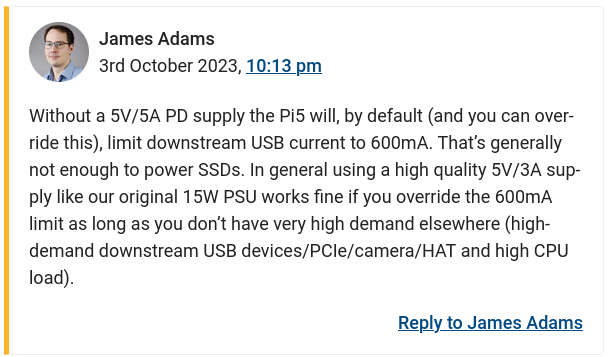5 Surprising Features of Raspberry Pi 5

Introduction
The announcement of Raspberry Pi 5 has come as a huge shock. But not only is the new model itself a shock, but it comes with a number of really surprising features.
In this article, we’re going to outline 5 surprising features of Raspberry Pi 5.
But first, let me tell you about the PiCockpit Raspberry Pi 5 Contest – where you can win a free Raspberry Pi 5!
Contest & Newsletter
We know how frustrating it is to have to wait until October 23rd for a Raspberry Pi 5.
So we wanted to make it possible for you to play around with one as soon as possible.
So we’ve set up a contest: What’s the craziest thing you can come up with for Raspberry Pi 5?

Provided your idea doesn’t destroy it, you can send us your idea and we’ll enact it on ours – and write an article about it!
We’ll announce the winner here and on buyzero.de on October 23rd.
The winning idea (determined by us) will win a full Raspberry Pi 5 kit – including with a 27W USB-C Power Delivery (PD) Power Supply, a Raspberry Pi 5 case, an SD card, and a Raspberry Pi 5. All with free shipping within the EU.
The runner-up will win a Raspberry Pi 5 with free shipping within the EU.
So be sure to send in your ideas – you can comment below!
Now that we’ve covered that, let’s get into the 5 surprising features of Raspberry Pi 5.
Feature #1: PCIe
The Pi 5 surprised me the most with its PCIe interface, enabling the use of high bandwidth HATs with additional features. Of course, Raspberry Pi Compute Module 4 had a PCIe interface that was accessible through the I/O Board. And Raspberry Pi 4 had an internal
Now, this device has a PCIe 2.0 x1 connector, making NVMe drives usable.
PCIe 2.0 x1 provides 5GT/s, meaning that with a single lane, you get a throughput 5 Gbps.
You can utilize a PCIe HAT for SSD to connect high-speed NVMe SSDs to the Raspberry Pi. This dramatically enhances storage performance for data-intensive applications or high-speed local storage solutions.
PCIe integration allows for high-speed network adapters like 10 GbE or 40 GbE cards. These are valuable for network applications requiring high data throughput, such as NAS systems or advanced networking projects.
Despite the limited bandwidth of PCIe Gen 2.0 x1, it can still connect low-power graphics cards, beneficial for hardware-accelerated tasks, machine learning, or cryptocurrency mining projects.
If you want to see the whole range of PCIe devices that could potentially be hooked up to a Pi, head over to Jeff Geerling’s PCIe device page.
Feature #2: Wayland-Enabled Desktop
Wayland replaces the old X11 display server protocol, offering a new graphics stack.
Wayland enhances security by isolating applications from each other.
Unlike X11, Wayland does not allow one application to read or modify the graphics of another application. This isolation aims at preventing potential security vulnerabilities and makes it a safer choice for modern computing.
For gamers, Wayland offers a superior experience.
The reduced input lag and improved rendering can make a noticeable difference in fast-paced games. I wrote about how smooth it is playing DOOM on my Raspberry Pi 5.
Feature #3: Cryptography
When it comes to encryption and decryption, the Raspberry Pi 5 operates at an unprecedented level.
According to Jeff Geerling, the Pi 5 speeds up cryptography by 45 times.

Check out more information about the ARMv8 cryptography extensions here.
Feature #4: New Power Supply
The new power supply is a particularly surprising feature, going by what people have written on the forums. And while it’s surprising, a lot of people aren’t thrilled with the new power supply.
So, the new 27W USB-C Power Delivery (PD) Power Supply will deliver a maximum of 5A at 5.1V. It’s important to keep in mind that this new power supply is what will enable Raspberry Pi 5 to power a wider range of peripherals than previous models.
The total power drawn from all four USB ports on Raspberry Pi 5 is limited, by default, to a nominal 600mA. When your Pi detects the 27W USB-C PD Power Supply, then it automatically increases this limit to a nominal 1.6A.
The 27W USB-C PD Power Supply is also capable of delivering 3A at 9V, 2.25A at 12V, and 1.8A at 15V to PD-compatible products. This means that if you do decide to get the new power supply, you’ll also be able to use it to charge other devices (like mobile phones).
As James Adams mentions in his sit-down interview with Eben Upton, it was a challenge to get the power supply to run at 5V/5A, because that’s low voltage at a high current.
One thing worth mentioning though is that your Raspberry Pi 5 will still run with current Raspberry Pi power adapters. In fact, I’ve been fiddling around with a Raspberry Pi 5 for weeks using the adapter I got for my Pi 4.
It, will, however, be limited if you want to do something with SSDs.
Feature #5: RP1
RP1 stands out as one of Raspberry Pi 5’s defining features.
Internally known as Project Y, the $15m program produced the RP1, which integrates GPIO, USB, and more.
Raspberry Pi 5 features its RP1 chip, controlling on-board peripherals, communicating through I2C, SPI, USB, Ethernet, cameras, and displays via a 4-lane PCI Express bus.
RP1 comes with a 40nm process node.

RP1 serves as the southbridge, managing most of Raspberry Pi 5’s I/O capabilities, marking Raspberry Pi’s flagship product’s first in-house developed silicon. This development opens a new realm of possibilities.
Due to the southbridge, there’s a whole new universe of peripheral performance and functionality.
Conclusion
There you have it, folks!
These are the 5 especially surprising features of Raspberry Pi 5 that stood out to us.
Do you find any other features surprising? Comment below!
Also, be sure to check out other articles on Raspberry Pi 5:



i would run a Thunderbird program, a browser with videos, a text input software (simple office),
my outdoor USB-Cam (surveillance) and a video encoding software
AT THE SAME TIME, – mulititasking!!
so now i need 2 Raspberry pi 4s for these taks and i am switching on my montor
from one to another. -THE RASPI 5 will do it all together, i think. WITH 8GB RAM!
so crazy? … i am a little bit scared of observing , spying software on a computer , even i do not like to be filmed when i am at a computer…. but is this better at WINDOWS 10 ?
– i dont know!
I again would try some windows X86 – software without a supporting processor on
a nearby Windows-PC connected to it!
I tried wine with a few little Windows-Programs like PDF24-creator (did run!), Printerdriver for PANTUM2500W- Printer (did run once on RPi400, and Audials One (did just start, then stopped!), a TV-Software (DVB-T2 did start), office (did run).
These apps need a X64-Processor, perhaps the RPI5 can emulate it faster?! ….should i try DOS-BOX again?
So, what is not crazy is the virtual software “Boxed” with emulated other oSes. It did not run on my Pi400. I would try it again.
I would install ANDROID OS again on my pi 5 !
I once had it installed but then i did loose it! I found another but it was too slow,
because i wanted video-action. I used a SD-Card instead of a micro-sd card on a Pi400 and had success! (But just on a 16:9 screen, i could not use my old 4:3-Screens)
SO: THE NICE Raspberry Pi – Desktop exchanged to the simple mobile-OS ANDROID?
Yes, there were many apps free with manuals!
I WOULD thrash my old RASPBERRY PI 2 away. Its too simple and slow and old!
Give your Pi 2 to some kid who is interested in learning to code.